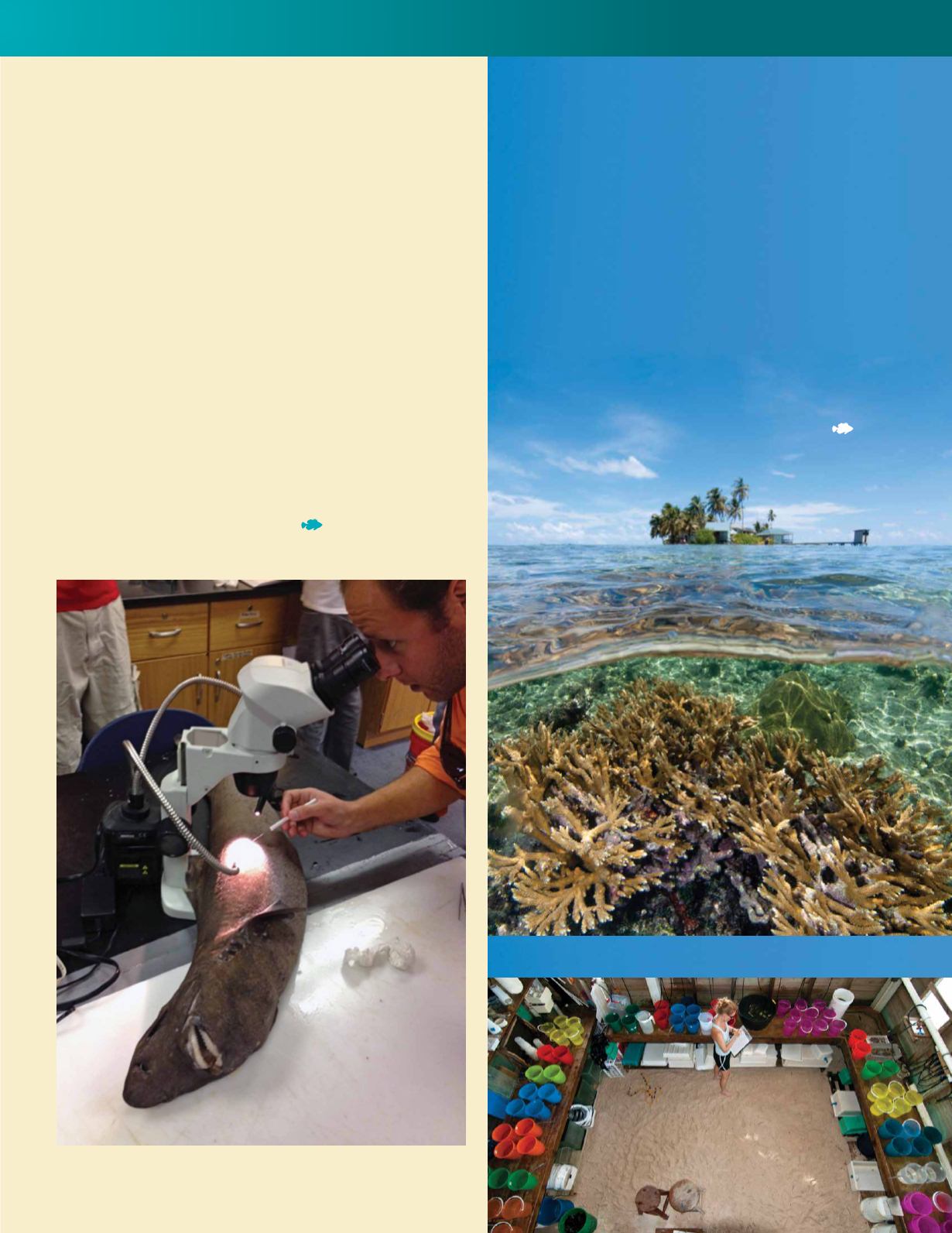
5
Rare Deepwater Shark Identified
by NSU Researcher
In February, a local commercial pelagic longline fisherman
who has done a number of collaborative research projects
with NSU caught an unknown species of shark when his gear
unexpectedly sank more than 1,500 feet. Upon returning to
the dock, Captain Ally Mercier of the
F/V Kristin Lee
donated the
specimen to
David Kerstetter
, Ph.D., OC assistant professor.
Under the guidance of Kerstetter and
Lacie Carter
, M.S.
student, members of the Fisheries Research Laboratory were
able to locate distinguishing characters, such as the leaf-like
shape of its dermal denticles (tooth-like structures that cover
shark skin), that identified it as a leafscale gulper, a deep-water
member of the dogfish family of sharks. As one of only four
confirmed specimens of this species from the western North
Atlantic and the only one from the U.S. coastal shelf, this shark
will be deposited on permanent loan with the Florida Museum
of Natural History at the University of Florida.
A significant thank you goes to Jose Castro of NOAA and Chip
Cotton of Florida State University, who provided additional
help with the species identification.
Travis Moore, graduate student, looks over a leafscale gulper shark.
Nicole Fogarty, Ph.D., sets up for
experiments examining the pheromone
involved in coral spawning.
Acropora prolifera
(hybrid) is shown in front of Carrie Bow Caye.
Faculty Member Conducts Coral
Spawning Research in Belize
Nicole Fogarty
, Ph.D., assistant professor, and her
colleagues from the Smithsonian Marine Station, visited
Carrie Bow Caye, Belize, to conduct experiments during
coral spawning in August and September of 2012. Fogarty
was conducting experiments on polyspermy, hybridization,
and pheromones involved in coral spawning. In August,
they monitored more than 500 tagged acroporid corals for
spawning. On the fifth day after the full moon, their efforts
paid off when about 75 percent of the
A. palmata
colonies
and a few
A. cervicornis
colonies spawned. Unfortunately,
Tropical StormErnesto kept them fromdiving over the next
couple of nights when
A. cervicornis
and
Diploria spp.
typically spawn. In September, they had better weather
and collected data on experiments related to
Montastraea
annularis, M. faveolata,
and
M. franksi
spawning.


